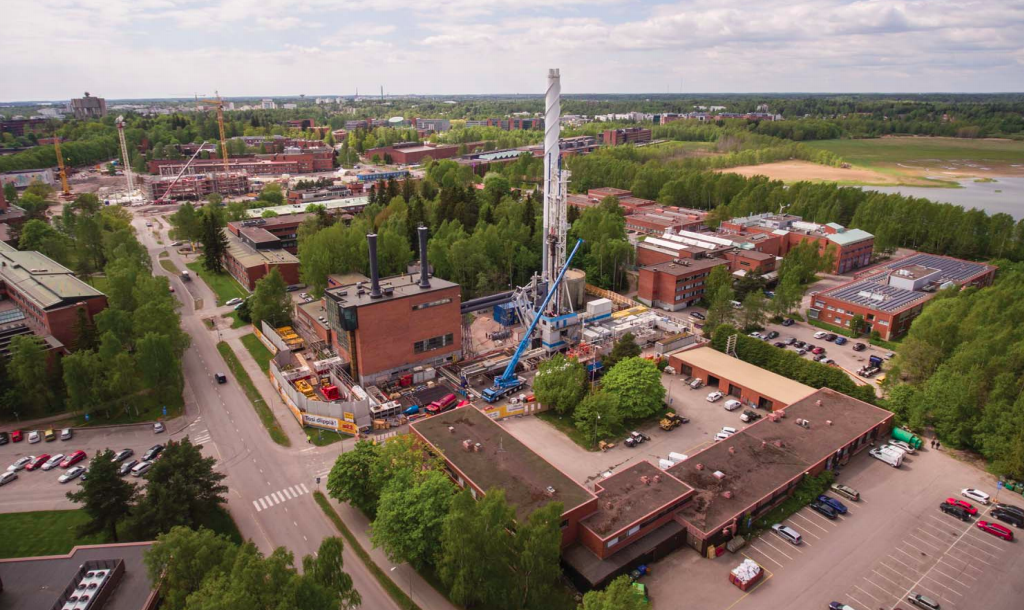Developer successfully drills 6,400m well for geothermal heating project in Finland
Finnish energy company St1 reports having successfully drilled the deepest geothermal well for its geothermal district heating project in Finland.
In a statement on LinkedIn, the CEO of St1 Oy Finland and St1 Norge AS Norway announces that the first well in the Otaniemi project has now been drilled to the final depth of 6,4 km this past weekend. With the well, the company has shown the world that deep wells can be drilled into Scandinavian granite in cooperation with St1 and partners.
The company’s goal is to build industrial scale heat plant running on geothermal energy. To date, three deeper wells have been drilled for research use; in Russia 12.3 km, in Germany 9.1 km and in Sweden 6.96 km. The drilled now is the deepest well ever drilled for energy production, a world record in its kind.
The goal of St1 Deep Heat is to build Finland’s first industrial scale heat plant running on geothermal energy. Energy company Fortum will act as a partner and buy the energy for Espoo’s district heating network.
St1 already has experience on sustainably produced energy, and geothermal heat is a natural next step. The process where geothermal heat is extracted is fairly simple. Process begins when two 7-km-deep holes are drilled into the crust of the Earth. Water is fed down to the bedrock where its temperature will rise due to geothermal heat. The hot water will rise up, and the heat will be entered into district heating network. A complete plant should produce as much as 40 megawatts of energy.
The challenge of the project is Finland’s hard bedrock and a specially manufactured drill is needed to get through. Still it takes months to drill a 7-km-deep hole. The heat plant itself will be completed in 2018, and it is planned to cover 10% of the district heating needed in Espoo. If the pilot succeeds the technology can also be taken into use elsewhere in in the Nordic countries.


















